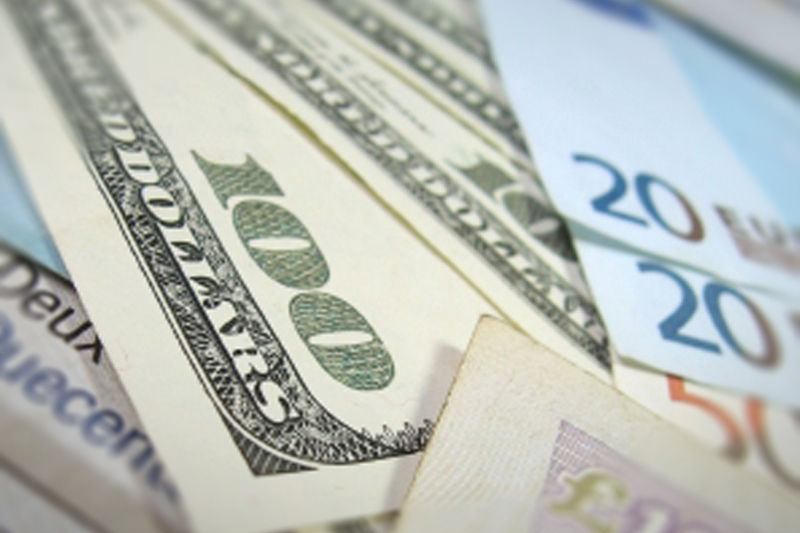Investing.com -- EUR/USD surged on Thursday to fresh 3-month highs, extending sharp gains from the previous session, as currency traders continued to gear up for the likelihood of a disappointing U.S. jobs report which could cap a stellar week for the euro.
The currency pair traded in a broad range between 1.1070 and 1.1238, before settling at 1.1210, up 0.0106 or 1.04% on the session. The euro soared above 1.12 against the dollar for the first time since late-October, then held onto the gains to post its strongest two-day move since the August flash crash. EUR/USD has closed higher in each of the last four sessions, jumping more than 3.3% from last Friday's lows after the Bank of Japan propped up the dollar with a shocking decision to push interest rates into negative territory.
EUR/USD likely gained support at 1.0538, the low from December 3 and was met with resistance at 1.1496, the high from Oct. 15.
Initial U.S. jobless claims last week, according to government reports released on Thursday, rose 8,000 to 285,000 for the week ending on Jan. 30, slightly above consensus' estimates of 280,000. New claims continued to trend higher, as the four-week average increased to 284,750, up approximately by 5,000 from the same level a month ago. While continuing claims fell considerably to 2.255 million for the week ending on Jan. 23, the four-week average moved higher for the fourth consecutive week.
The downbeat data will likely temper analysts' optimism heading into Friday morning's U.S. jobs report for the month of January. The Labor Department's Bureau of Labor Statistics is expected to report that nonfarm payrolls increased by 188,000 in January, falling sharply from December's robust gain of 292,000. It would mark the first month that the figure dipped under 200,000 since September. The unemployment rate, meanwhile, is expected to remain unchanged at 5.0%.
Most economists, though, are more concerned with the pace of wage growth amid a pattern of muted hourly earnings over the last year. A major uptick in earnings could bolster wage push inflation and help the Federal Reserve move closer to fulfilling both legs of its dual mandate. Although Core PCE Inflation ticked up by 0.1 to 1.4% in January, it still remains considerably below the Fed's targeted objective of 2.0%. The Core PCE Index, which strips out volatile food and energy prices, is the Fed's preferred gauge for inflation.
A dismal jobs report could persuade hawkish members of the Federal Reserve to act more cautiously in advocating swift policy normalization this year. Earlier this week, Federal Reserve Bank of New York president William Dudley noted that the "tightening of financial conditions" since the Federal Open Market Committee began raising rates in December has become a "matter of considerable concern," to the U.S. central bank. There is now a 69.4% probability that the Fed will not raise rates in 2016, according to the CME Group's (O:CME) Fed Watch tool, up from 39.6% last month.
Following the surprise move by the BOJ last week, two of the top three central banks are now offering negative interest rates for the first time on record. In effect, the BOJ's decision helps the Fed tighten its monetary policy cycle without raising interest rates. The European Central Bank could lower its deposit rate deeper into negative territory when its Governing Council meets next in March.
The U.S. Dollar Index, which measures the strength of the greenback versus a basket of six other major currencies, fell to a fresh 3-month low on Thursday before rallying slightly to close at 96.51. A day earlier, the index plummeted by more than 1.5%, while suffering its worst one-day loss on the new year.
The index has fallen by approximately 3.5% from its level of 100.60 in early-December when it reached a 12-month high.
Yields on the U.S. 10-Year fell four basis points to 1.846%, remaining near 10-month lows.
